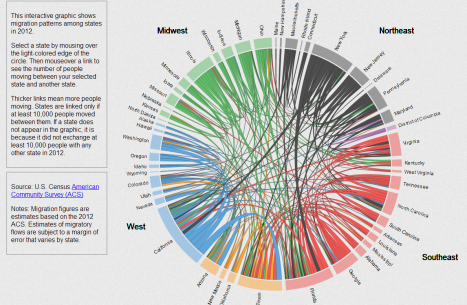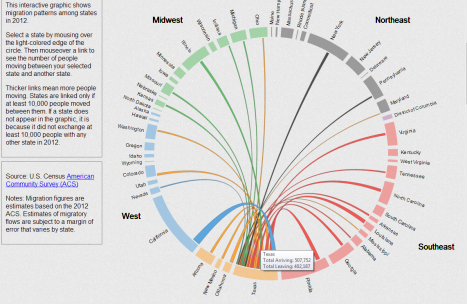
A ‘Whom Do You Hang With?’ Map of America : Krulwich Wonders… : NPR.
Ever since the borders of our 50 states were drawn so many years ago cultural geographers have been trying to figure out if they reflect who we are, or if they are just arbitrary lines on a map. Well, here are some answers.
[these] hunk[s] of America, in his view, is now an “effective community,” a place where people-to-people business has a distinct flavor, distinct from neighboring regions. In other words, it’s its own neighborhood.
California’s “neighborhood” includes Arizona and much of Nevada.
The above map is based on WheresGeorge.com data. This website, where you can enter the serial number of the bills in your wallet, and then watch as they travel around the country, shows several distinct “neighborhoods.”
In the Seattle area, for example, his team found that over two weeks, only 7.8 percent of the bills moved more than 500 miles away. Most of the money stayed close. More interestingly, Dirk’s team began to notice virtual borders, lines that the money rarely crossed. In this map, you can see the territory marked by the Canadian border to the north, a bit of California at the southern end, and Idaho to the east. Oregon and Washington seem undifferentiated. But at the edges, a blue border seems to capture and contain most of the cash (and the people?) moving within. Those lines, Dirk marked deep blue.
Another map, by some folks at MIT, uses anonymous AT&T data.

This map shows different, but equally ‘unstate-like’ borders.
Will we remain the 50 states forever? Or will our borders change to reflect the changing demographics of this country?
Filed under: Uncategorized | Tagged: borders, demographics, USA, wheresgeorge | Leave a comment »











